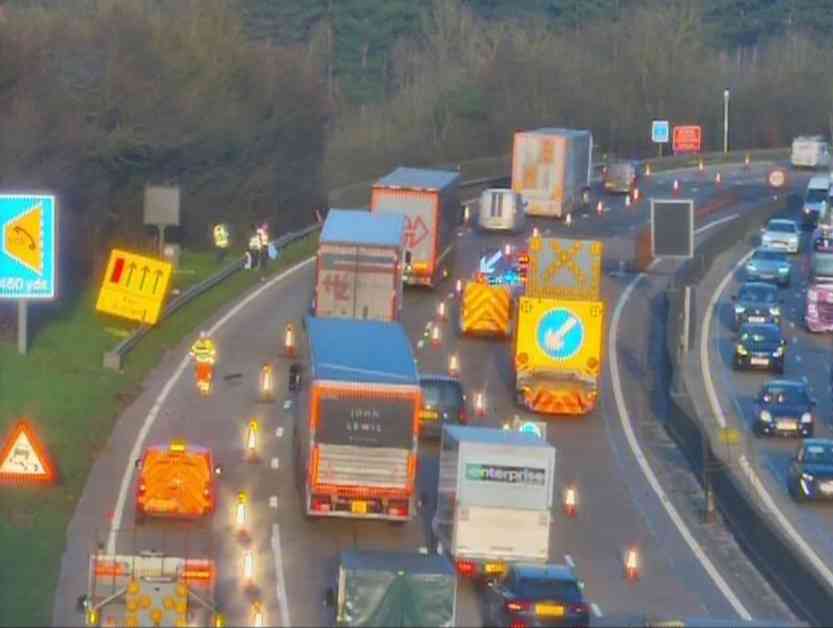Summary: The article discusses the recent M25 traffic chaos that led to two-hour delays for commuters. The website and associated newspapers comply with the Independent Press Standards Organisation’s Editors’ Code of Practice. Readers are encouraged to contact the editor with any complaints about the editorial content.
—
Motorists were left frustrated and stranded for hours on the M25 as a sudden traffic buildup caused two-hour delays on a typically busy weekday morning. The unexpected gridlock brought the highway to a standstill, leaving commuters scrambling for alternative routes and coping mechanisms. The incident, although not uncommon on this stretch of road, highlighted the need for improved infrastructure and planning to prevent such disruptions in the future.
Challenges of Commuting on the M25
Navigating the M25 during rush hour can often feel like a high-stakes game of chance, with traffic conditions changing rapidly and unpredictably. The circular motorway that encircles London is notorious for its congestion, accidents, and roadworks, making it a challenging route for even the most seasoned drivers. Commuters who rely on this vital artery for their daily travel face a constant battle against the clock, hoping to outsmart traffic patterns and avoid being caught in the inevitable snarl-ups.
Expert transportation analyst, Dr. Sarah Jenkins, sheds light on the underlying issues that contribute to the frequent traffic chaos on the M25. “The sheer volume of vehicles, coupled with outdated infrastructure and ongoing maintenance work, creates a perfect storm for gridlock on this crucial motorway,” she explains. Dr. Jenkins emphasizes the need for long-term solutions, such as expanding lanes, improving public transportation options, and implementing smart traffic management systems to alleviate congestion and enhance commuter safety.
Impacts on Daily Life and Well-Being
The ripple effects of a major traffic incident like the recent M25 delays extend far beyond the inconvenience of being stuck in a car for hours on end. Commuters who rely on timely arrivals to work, appointments, or other commitments find themselves grappling with stress, frustration, and lost productivity. The mental toll of navigating through bumper-to-bumper traffic can take a significant toll on one’s well-being, leading to increased anxiety, fatigue, and irritability.
As a frequent M25 commuter myself, I can attest to the challenges and uncertainties that come with traversing this notorious stretch of road. On a particularly hectic morning last year, I found myself caught in a similar traffic snarl-up that resulted in a three-hour delay to my destination. The experience was not only physically draining but also emotionally taxing, as I struggled to remain calm and composed amidst the chaos unfolding around me.
—
In conclusion, the recent M25 traffic chaos serves as a stark reminder of the fragility of our transportation network and the urgent need for proactive measures to address congestion and delays. By investing in modernizing infrastructure, promoting sustainable transportation options, and prioritizing commuter safety, we can pave the way for a more efficient and resilient road system. As we navigate the challenges of urban mobility, let us remember that behind every traffic jam lies a story of individuals striving to reach their destinations and overcome obstacles along the way.





















